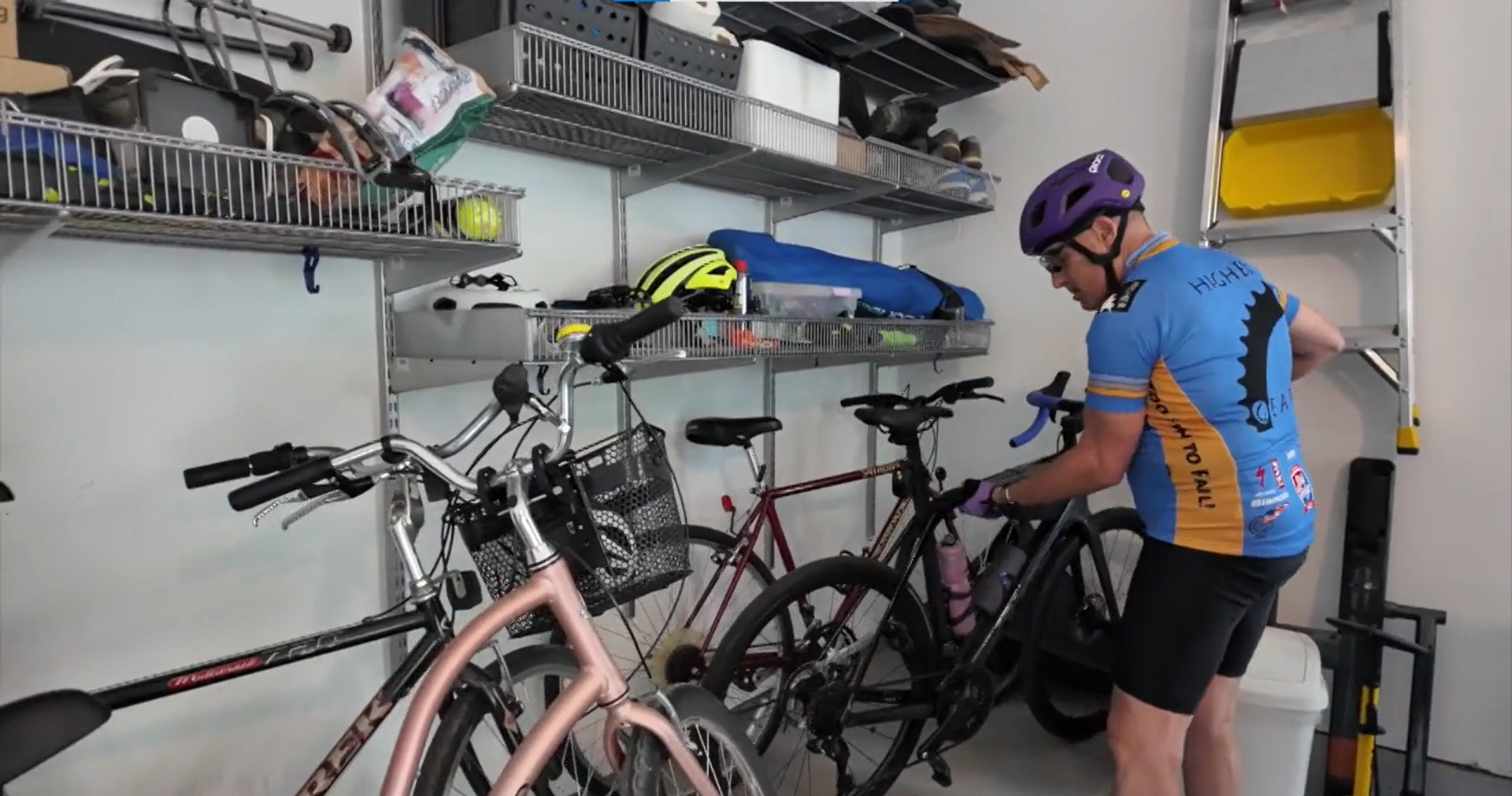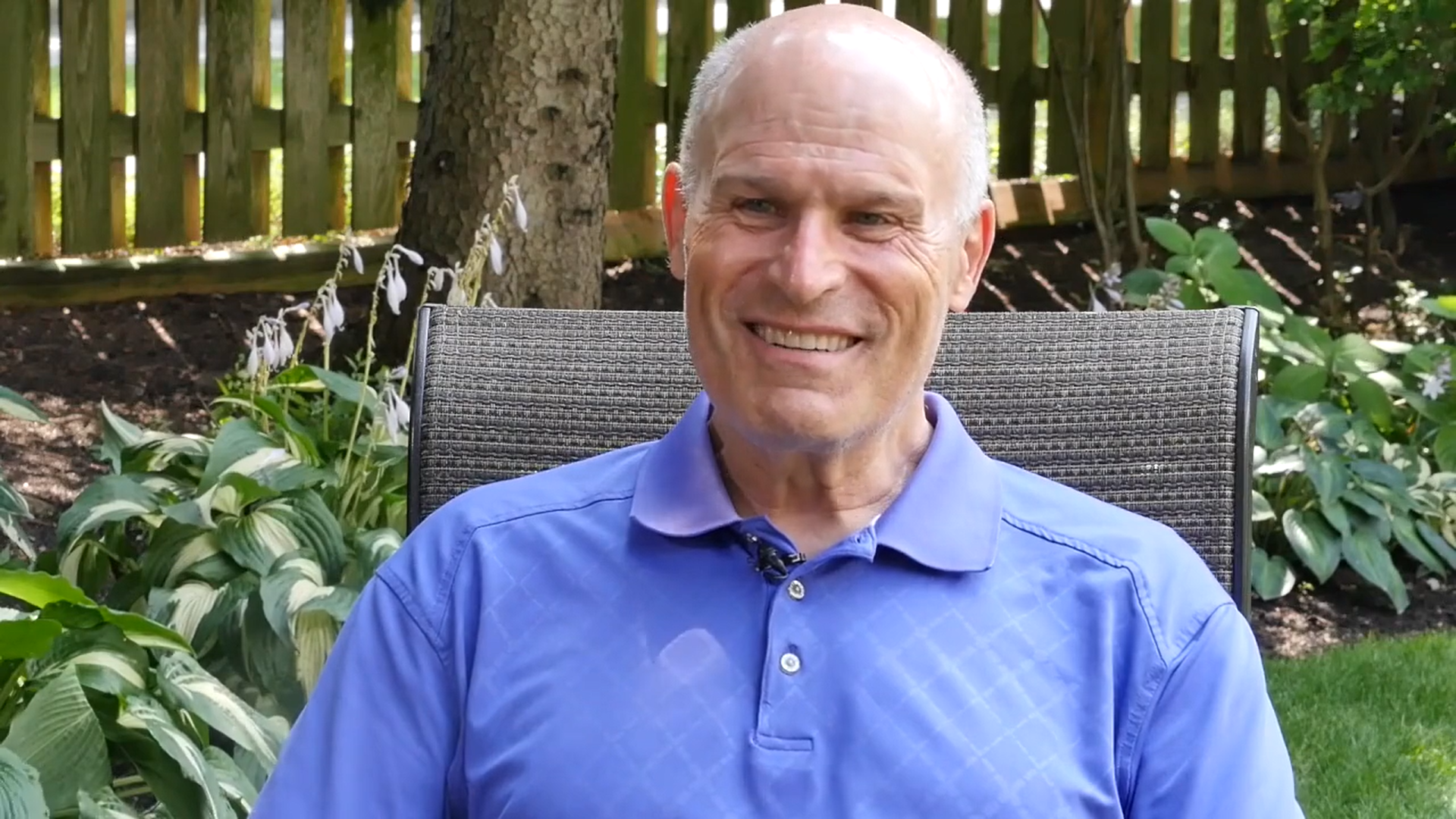From Concussion to Vision Challenges
The Mind-Eye Institute team not only resolved his diplopia – double vision – but may have awarded him an extra benefit. “Since wearing the Mind-Eye lens prescriptions for the past two years, I found I no longer need reading glasses. I am a man in my mid-60s who has required readers since his 40s, and now I don’t need them anymore. That’s fantastic,” says Alan Weiss of Highland Park, Illinois.
And Alan credits Mind-Eye optometrists Deborah Zelinsky OD and Carla Adams OD for the positive changes in his life, including his restoration to near-normal eyesight following the severe concussion he sustained. He had collided with a motor vehicle while riding a bicycle near the Pacific coast in Southern California.

“I would say 99% of my normal eyesight as returned.”
- Alan Weiss, Head-Injury Patient
“I would say 99% of my normal eyesight has returned. In fact, just recently, I was able to hit golf balls again at the driving range” – something Alan could not do, but attempted, six months after his accident. “Today, I can participate in all the sports and activities I was doing before my injury.”
The bike accident occurred in January 2022 just prior to Alan’s and his wife’s return to the Chicago area. His eyesight problems developed soon afterwards.
“When I looked to my right or straight ahead, I could see clearly. But when I turned my eyes left, I saw double. I literally had to move my head and body almost completely in that direction to see clearly to the left,” Alan relates.
In June or July of the same year as Alan’s injury, his company sponsored a team-building event, which included golf. “I could not even hit the ball then. Every time I looked down at it, I saw two balls,” Alan recalls.
Alan, a trained engineer who comes from a family of scientists, readily admits he does not know how the Mind-Eye Institute’s advanced optometric science works. “I just know that it does,” he states.
About the Mind-Eye Institute
Based in Northbrook, Illinois, the Mind-Eye Institute is internationally noted for the successful use of highly individualized therapeutic lenses, filters, and other advanced optometric tools to manipulate the amount, angle, and intensity of light entering through a patient’s retina, thereby helping relieve brain-related symptoms of injury or disease. These symptoms can include visual processing difficulties, eyesight disorders, emotional and behavioral anomalies, memory loss, and problems with balance and autonomic function.
The retina also plays a significant part in integrating various sensory maps, including eye-ear coordination, to help patients process surrounding space and achieve proper spatial awareness. Synchronization of perceived auditory and visual space optimizes a person’s overall performance, including movement, executive functioning, memory, and the sequencing of brain functions required for effective communication skills, explains Dr. Zelinsky. She is a globally recognized retinal processing expert and the founder of the Mind-Eye Institute.
The Mind-Eye team is particularly known for its comprehensive patient evaluations, including the Z-Bell Test℠, which enables health professionals to evaluate a patient’s retinal processing capabilities, says Dr. Zelinsky, inventor of the unique testing method.
The Z-Bell Test℠
During a typical Z-Bell℠ evaluation, a patient closes his or her eyes and tries to locate and touch a ringing bell. If the patient cannot do so, a Mind-Eye optometrist places different lenses, prisms, and/or filters across the patient’s closed eyelids until an optimal combination allows the patient to find the bell immediately. These optical appliances bend light in diverse ways across the retina, thereby impacting brain function.
Science has shown that “Even when eyes are closed, a low level of light still passes through the eyelids and stimulates the retina, which is composed of brain tissue and is an overlooked part of the central nervous system”. Retinal stimulation by light also activates parts of the brain not used for eyesight (non-image-forming pathways). With eyes closed, patients are still having to visualize surrounding space in 3-D in order to locate the bell.
“By placing various types of lenses across a patient’s closed eyes, we can change the way light spreads over the retina (retinal stimulation), thus modifying the dynamic relationship between the mind’s visual inputs and the body’s internal responses,” Dr. Zelinsky explains.
Alan laughingly recalls his initial inability to reach out and touch the sounding bell. “I kept teasing Dr. Zelinsky that she was moving the bell while my eyes were closed. But, ultimately, through her use of different lenses, I could hit the bell.”
How Alan Weiss Learned About Mind-Eye
He first learned about the Mind-Eye team from his primary care physician – weeks after seeking answers for his double vision from a variety of specialists, among them a neuro-ophthalmologist who diagnosed Alan as having 20% palsy of one of his optic nerves due to the accident. “He recommended I wear prism glasses. I preferred not to do that and, instead, wore clear glasses with prisms in them over my contact lenses,” Alan says. “The glasses helped to a degree but did not get me to where I wanted to go in terms of recovery.”
Indeed, the diplopia was seriously affecting Alan’s everyday activities, especially doing office work from home using his computer. “After a half hour or 45 minutes on the computer, I would be spent. I would have to lie down and take a nap for 20 or 30 minutes,” he remembers. “Then, I could go back to work. It was frustrating. This eyesight problem was not a sustainable situation.
“My physician said Mind-Eye methods may seem 'unusual,' but they work."
- Alan Weiss, Head-Injury Patient
Indeed, the diplopia was seriously affecting Alan’s everyday activities, especially doing office work from home using his computer. “After a half hour or 45 minutes on the computer, I would be spent. I would have to lie down and take a nap for 20 or 30 minutes,” he remembers. “Then, I could go back to work. It was frustrating. This eyesight problem was not a sustainable situation.”
Alan returned to his primary care physician for more help. At that point, his physician recommended he contact Dr. Zelinsky. “He told me, ‘You might find her methods a bit unorthodox, but she is really good at what she does, and she could potentially help you return to normal eyesight. Give it a shot.’ That is when I called the Mind-Eye Institute. The staff there gave me hope. They said recovery might take a while but eventually I should get there.”
He credits both Drs. Adams and Zelinsky and his own diligence in following their directions for wearing prescribed filters and lenses and performing the recommended at-home exercises for his successful, two-year journey to recovery.
“I am very grateful to the Mind-Eye team and have wholeheartedly recommended the Mind-Eye to people whom I know also have eyesight problems and related issues. I am extremely pleased with my results.”
Although Alan Weiss reports symptom relief, his experience is not always the norm, nor is it guaranteed for every patient. Check out the Mind-Eye Institute at www.mindeye.com for additional information.
Interested in learning more?
At the Mind-Eye Institute we understand that interactions between the electrical and biochemical pathways in the brain affect physical, physiological and psychological systems. Visual interventions that alter retinal signaling pathways impact both the electrical and biochemical systems.
To learn about next steps for registering as a patient or registering a child as a patient, please call the Mind-Eye Institute office at 847.558.7817 or you can fill out our online New Patient Inquiry Form provided here.



